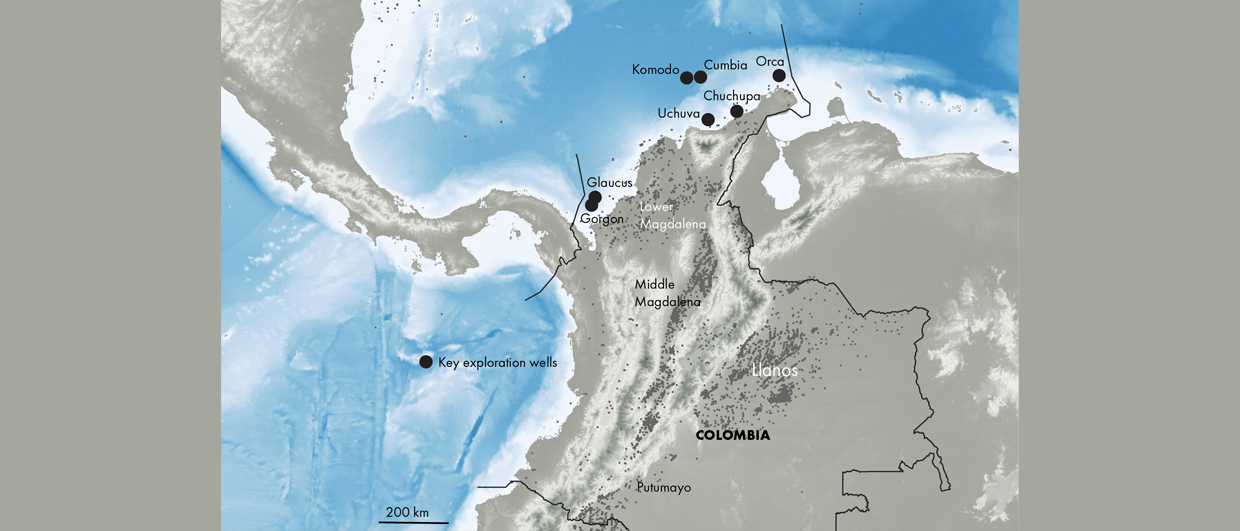Although natural gas production (1,050 MMcfd) in Colombia exceeds daily demand (960 MMcfd), the contrary could occur in the coming years with increasing demand and a slowdown in discoveries and decline in reserves.
The growth in demand is likely to unfold as over 1.5 million households that nowadays still rely on firewood for cooking are expected to elevate their living standards through the adoption of natural gas. Simultaneously, the nation’s concerted efforts to mitigate emissions entail a gradual shift away from coal production, further fueling the momentum toward embracing cleaner energy alternatives like natural gas.
Encouragingly, Colombia has shown clear signs of additional natural gas potential across both its onshore and offshore basins in recent years, signaling a promising trajectory for future exploration and development endeavors. Onshore, operating companies have continued to report gas discoveries in the Lower and Middle Magdalena Valley, Llanos, and Putumayo basins, while the increase in GOR continues to be an opportunity to improve domestic gas production in mature fields and basins.
Offshore, the ongoing discoveries made by Ecopetrol, Shell, and Petrobras (Gorgon, Glaucus, Uchuva, and Orca) continue to give indications of the potential for developing new offshore natural gas reserves in Colombia. Likewise, exploratory plans in ultra-deep waters by Oxy, Chevron, and Ecopetrol (Komodo and Cumbia) add to the high potential that the Caribbean represents for Colombia’s energy sufficiency. This potential is so clear that at the CERAWeek Energy Conference in Houston, Joelson Mendes, Petrobras’ chief exploration and production officer, told Reuters that “there could be more gas than what Colombia needs.”
Given Colombia’s advantageous location with access to markets in Asia, Europe, and Central America due to its exit to the Pacific and Atlantic Oceans and its proximity to the Panama Canal, this increase in gas reserves could mean a business opportunity with the possibility of establishing LNG facilities thereby enabling direct exports to numerous markets – a longstanding objective of present regional operators. This plan to establish Colombia as a natural gas-producing province must be based on a cohesive and integrated approach among the different regional actors in the industry. This concerted effort is crucial not only for meeting the needs of both local and international consumers but also for aligning with national and global energy transition objectives. The potential is monumental, promising transformative impacts on both a national and global scale.



